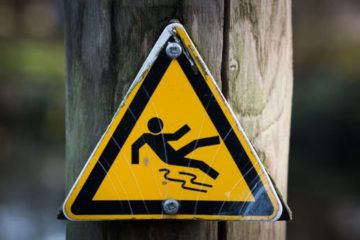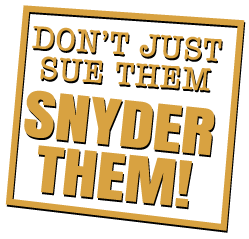
Proving fault in a slip and fall case can be tricky because you have to show that it was a direct result of negligence.
A slip and fall is a tricky personal injury claim because it is easy to accidentally slip and fall anywhere. It is only when you fell due to some type of negligence that you can potentially receive compensation. If you suffered injuries from a slip and fall because of someone else’s negligence, here is how to prove fault.
Could The Accident Have Been Prevented?
This is the first question you should ask yourself before deciding to bring on a slip and fall case. If there was nothing more the property owner could have done to prevent the accident, then they are not at fault. If the floor was slippery, but they had a caution sign up, then they aren’t at fault. However, if there was a spill of some sort and nobody put a wet floor sign down or cleaned it up, then they could be at fault for the injuries caused.
Liability
In order to receive compensation for your injuries, you must prove that the property owner was fully liable for the slip and fall. You must prove one of three things to show liability:
- The property owner or an employee should have known about the dangerous condition because any other “reasonable” person in their position would have known about it.
- The property owner did know about the dangerous condition and chose not to fix it.
- The property owner is the person that caused the dangerous conditions and didn’t fix it.
Reasonableness
When it comes to a slip and fall case, you are essentially comparing the property owner to a “reasonable” person to show that their actions were negligent. This means that another person in the same situation as the property owner would have realized and fixed the dangerous conditions that were present. Some things to consider when it comes to showing reasonableness is how long the dangerous conditions were present before the accident. If there was a leaky ceiling in the building that had been there for months, that makes it less reasonable for the property owner to have left it there versus if the ceiling just began leaking that morning. If the slip and fall was over an object left on the ground, you should consider if there was a legitimate reason for that object to be there.
Have You Or A Loved One Suffered Injuries As A Result Of A Slip And Fall? Contact The Snyder Law Group Today
The Snyder Law Group, LLC, proudly represents clients throughout Maryland and Washington, D.C. Our experienced Baltimore attorneys understand the frustration that comes with an insurance company, medical professional, or other party that refuses to accept liability for negligent or reckless behavior. You can take heart in knowing there are talented and experienced lawyers ready to work for you. We are experienced in handling personal injury claims of medical malpractice or injury resulting from serious car and truck accidents and have secured hundreds of millions in verdicts settlements*. Give us a call at (410)-843-3476 for a free case evaluation. You can also visit our website www.410thefirm.com and follow us on Facebook, Twitter, Google +, and LinkedIn for more information.
